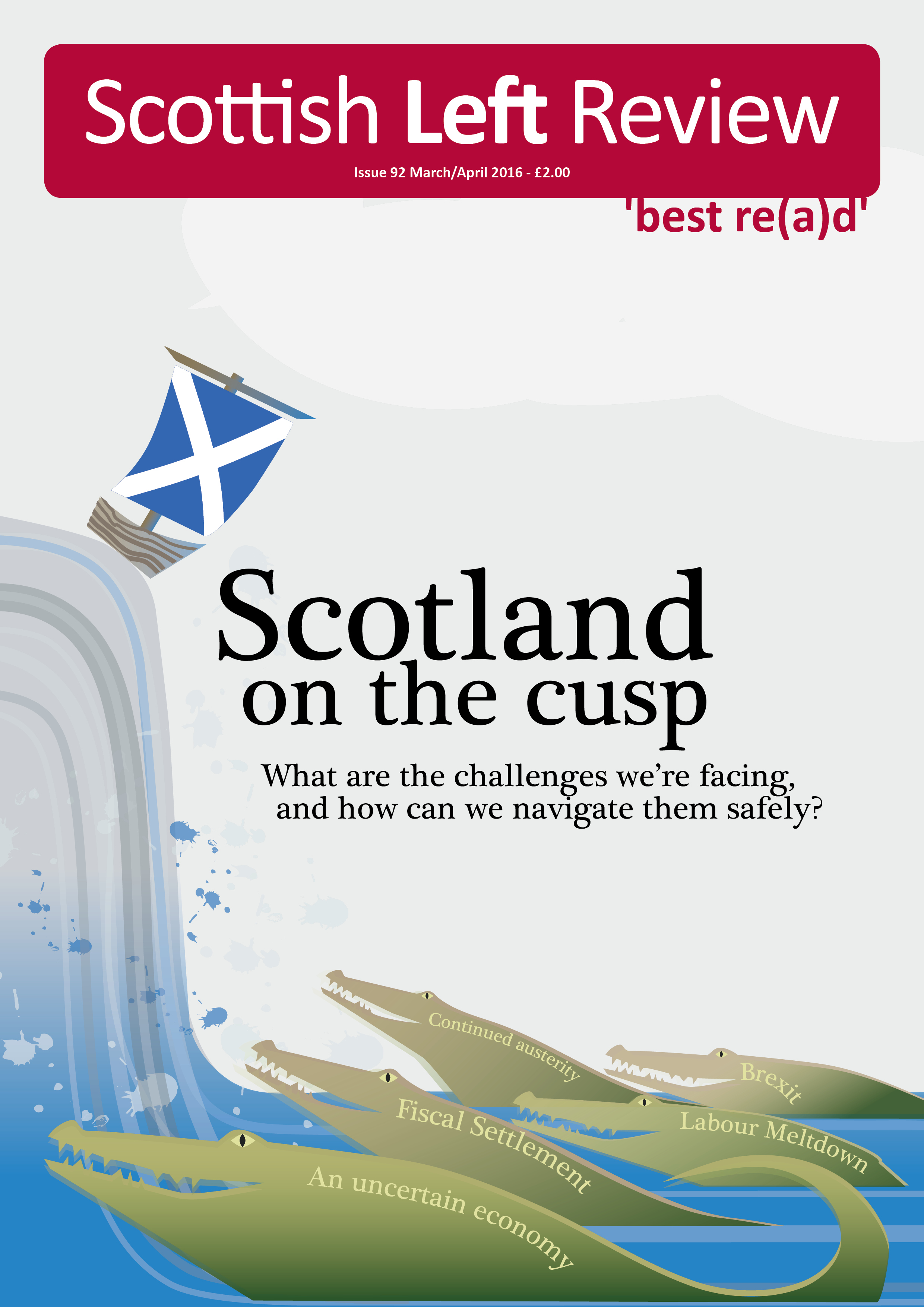Waiting 4 great leap forward
Two things look likely to happen on the morning of 6 May 2016 – we will wake up to a large SNP majority government and reduced voter turnout compared to the referendum. The two are linked in the past, present and future. From both pro- and anti- independence sides of the left, understanding the changing terrain of this aspect of Scottish politics will be vital.
The beauty of the referendum campaign was that both sides could have varying interpretations and visions of independence and union. Despite the power and resources of the Better Together and Yes Scotland campaigns, others like the Campaign for Socialism (CfS)/Red Paper Collective, Labour for Independence (LfI) and the Radical Independence Campaign (RIC) also had the opportunity to pitch in with their visions. This was especially so because the actual question on the ballot paper did not specify exactly what voting ‘yes’ or ‘no’ would entail. In other words, the political process was quite an open one.
Contrast this with the 5 May election. All the parties, large and small, have manifestos which are closed off from influence from the public. Decided by combinations of party members, party leaders and party spin doctors, the sense of inter-party competition is much greater as the prize of seats at Holyrood is a much more tangible outcome. There is very little room for the likes of CfS, LfI or RIC to make waves.
This them makes the election process a more closed off one, less lively, more choreographed and so on. Even with the technical changes to voter registration and the changed limit, the turnout will be lower.
For those that do vote, the most important issue is not one that many will have thought of so far. It is how will the SNP fare after 5 May 2016 as not just a majority government with new powers but as one with a leader who is no longer newly in post and is well practiced in the art of radical sounding rhetoric outdoing practical performance?
It was no radical, Herald columnist, David Torrance, who asked recently how long can the SNP get away being so successful but with delivering so little? For the left, there seem to be three possible options on the table. First, a move from within the SNP by its left to change the situation. Second, the left in Scottish Labour steps up to the plate. Or, third, RISE – Scotland’s Left Alliance or Solidarity become sizable, credible forces as the SSP once was.
Right now none seem very likely. Some of the answers are to be found just over the Irish Sea after the republics’ general election (using proportional representation and multi-member seats) on 26 February 2016. Despite the political and economic crisis since 2008, the two longstanding parties, Fine Gael and Fianna Fáil, continue to dominant albeit at a reduced level now of less than 50% of first preferences for the first time since the 1980s. Labour crashed (to just 7 TDs) after being in government with Fine Gael while Sinn Fein has risen to 23 TDs. The left alliances, parties and individuals (Anti-Austerity Alliance/People before Profit, Social Democrats, Independents 4 Change etc) have amongst them some 15 TDs (out of 158 in the Dail).
The SNP has monopolized centre-left politics in Scotland, creating something akin to a one-party state, so a challenge from within is some time off especially as the SNP is a centralized operation with powers of patronage. Prominent individuals on the left do not seem willing or able to challenge Sturgeon and Swinney. Scottish Labour still looks unable to shed its ‘new’ Labour skin, indicating political renewal is a long and drawn out process. RISE or Solidarity not only must make more than a minor breakthrough but use this as a base to rapidly develop. Here, the lesson of the Irish radical left’s success is that it already had parliamentary representation, its main parts formed a united front, it has well developed, charismatic leaders and has been to the fore over big material struggles (bin tax, austerity, water charges). These might then be seen as making up the necessary and sufficient conditions for lift off.
Brexit or McStay? There are left arguments for both as we show in this edition. The problem is trying to change the EU from without or within on a left basis is not credible right now because the left is so weak and enfeebled. If there is a vote to stay in, it will leave Cameron, Osborne and another ‘project fear’ with the upper hand. If there is a vote to exit, it will leave Johnson, Farage and their ‘project fear’ with the upper hand. Which is worse? Which is the devil we already know? Maybe these are the realistic terms of the debate we should be having rather than ‘freedom from neo-liberalism via independence’ or ‘another Europe is possible’.
We are delighted to have two feedback pieces in this issue as well as an array of articles that touch on and delve into some of the issues raised in this editorial. Our next issue will analyse the outcome of the Scottish Parliament election and more arguments



